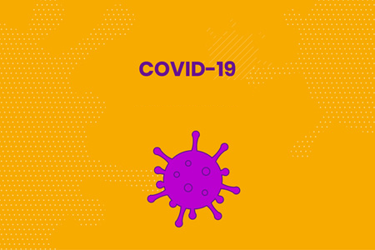The Who, What, Why, When, And How Of Patient Communication During COVID-19
By Josh Weiner, president, and CEO at Solutionreach

COVID-19 has been on everyone’s mind for weeks—and it has been a frightening and confusing time, to say the least. According to recent studies, 81 percent of adults say that this is a true “national emergency.” Three out of four report feeling stressed about outbreaks in their communities while nearly 70 percent say they are afraid that they, or a member of their family, will catch the virus. These fears are only exacerbated by a lack of information or confusion about what is true or not.
WHY Is Patient Communication Important Right Now?
About half the public (48 percent) have been exposed to made-up information about the virus and a substantial portion express belief in incorrect data. This fear, coupled with confusion on how to respond, has led to even more problems.
We’ve all heard the stories. A couple in Arizona took chloroquine phosphate—believing it would protect them from becoming infected. Unfortunately, the man died and his wife was hospitalized. A staggering 27 people were killed in Iran after following erroneous advice that drinking large amounts of alcohol would prevent COVID-19. And while those are extreme examples, there are many more who believe other common myths like the idea that you can kill the virus with a hairdryer or by drinking hot water. Unfortunately, misinformation leads to additional risks and potential problems for patients.
WHO Can Patients Look To As A Reliable Source Of Information?
With the huge amount of misinformation out there (and the real information changing by the day—or even the hour), patients must hear information from the most trusted source: their healthcare provider. Patients know that you are an unbiased source. They’ve already built a relationship of trust with you. They need you to guide them during this uncertain time.
HOW Should Communication Be Sent?
There are a variety of ways healthcare organizations can reach out to patients. The most effective include email, text messages, newsletters, and social media. Information should also be included, and updated regularly, on your website. For some populations, an old-fashioned phone call may be required. Use the contact preference method selected by your patients to guide you in selecting the best communication method.
WHEN Should Communication Be Sent?
Some organizations worry about sending too much information. However, in a situation like the COVID-19 pandemic, more information is better than less. A good cadence is sending informational newsletters twice per month during this time. That could be every other week or on set days such as the first and the fifteenth of each month. Social media should be updated daily with the latest data and guidance for your area. If something unexpected or urgent occurs, an additional email or text message can be sent. If in doubt, err on the side of over-communication.
WHAT Information Should Be Sent?
During this time, there are a few categories of information that need to be communicated. These include general information on the virus, specific information on the outbreak in your area, details on adjustments made to your healthcare organization, as well as ways you are keeping patients safe.
General information on COVID-19 needs to be communicated regularly. Use your website and social media to help patients understand this virus better. Newsletters also can include general data on the pandemic. Share symptoms, factors that put patients at higher risk, and what to do if a patient suspects they might have it. You should also be sharing the latest data and guidelines for your specific area. You can let patients know about testing criteria, updates on infection rates by community, and specific guidelines for social distancing.
Information on how your healthcare organization is responding to the crisis needs to regularly be shared as well. Changes in hours of operation, processes or procedures, and types of treatment occurring should be sent any time adjustments are made. If all elective surgeries, for example, have been halted in your geographic area, you should let patients know. If your waiting area has been closed or adjusted to facilitate appropriate social distancing, communicate that information. Patients also need to know what to do if they become sick. Stories are emerging of some people getting sick but not wanting to weigh down the health system so they avoid the doctor completely. We don’t want that! Encourage patients to get tested if they have symptoms.
Finally, you must let patients know what you are doing to keep them safe. This will be especially important in the coming weeks and months as we ease restrictions. Many will feel hesitant to visit the doctor for fear of contracting the virus. Be transparent and open about what you are doing to reduce the chance of transmission. Let them know how they can protect themselves when they come in. A little information goes a long way in helping patients feel more comfortable coming in for an appointment.
Never before have healthcare organizations been as front and center in the world as they are now. And while providers are used to using their medical know-how to fight illness, in this battle against COVID-19, communication is just as crucial. Patients are looking to providers for guidance and understanding during this scary time. Use all of the channels available to help keep patients in the loop so that they can react in a responsible and educated manner. Doing so will have a dramatic impact on the outcomes of this crisis.
About The Author
Josh Weiner is president and CEO at Solutionreach.
